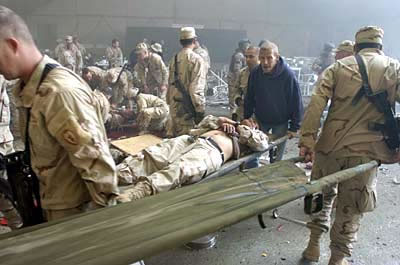
 Lessons from Emile Dickson, inventor of Band-Aid
Lessons from Emile Dickson, inventor of Band-Aid
What was one very common consequence of the adventures of childhood, be it cycling, running or climbing trees` It was having a fall and getting bruised.` We are all a little indebted to the healing and assuring care by Band-Aid!` This is the Band-Aid story as told by Johnson & Johnson:
Who hasn't used BAND-AID` Brand Adhesive Bandages` In a world full of cuts, scrapes, blisters and bruises it seems hard to imagine life without those little adhesive bandages.
(Courtesy: http://www.band-aid.com/brand-heritage)
The story of this invention is unfortunately obscure and lesser known. It is nevertheless, inspiring as well as interesting. Inventor Earle Dickson worked as a cotton buyer for Johnson & Johnson in the early 1920s. Coming home every day, he would find his wife Josephine Knight dutifully waiting for him with dinner. But the household chores left cuts and bruises on her. Every evening on coming home Dickson would spend time tending to these wounds by placing squares of gauze on the wounds. These would however not hold against the movement of the fingers when performing any activity.
He tried to improvise by placing intervals of gauze on a roll tape. And that brought him to the essential and enduring innovation leading to the invention of the Band-Aid. Of course, a very easy option was available to Dickson, to hire a cook and get rid of the complaints of cuts and wounds every day. We are, inclusive of Johnsons & Johnson, very indebted to him that he did not take that short-cut! His boss found the idea worthy of taking forward and in four years time, in 1924, Johnson & Johnson began to produce these erstwhile handmade bandages on a mass scale. Band-Aid became a brand of its own, and brought prosperity to Dickson, who later became the Vice President of the company.
You would say this is a typical story of most inventions ` a problem, followed by a solution in the form of an invention. So, what is there to learn from it`
Think Wise impels our readers to go beyond the obvious facts and find learning in stories which describe any achievement which has made life better. Here is what we found inspiring:
- Take action instead of just sympathizing.When someone we care about is in pain, there is always something we can do. If we truly care, we would never stop with giving `sincere sympathy`.` Dickson showed empathy in action by doing something about his wife`s everyday nicks and cuts instead of trivializing or sympathizing.
- A repeated complaint is a repeated appeal.Imagine coming back from a hard day`s work and having to work as a first-aid attendant. It is enough for us normal folks to feel exasperated and try to find a novel way of quitting, by searching some escape route. We are so full of complaining about things where we feel as victims ourselves, that there is no energy left to reach out to others. Earle Dickson not just showed compassion to his wife, he was able to put aside his own everyday challenges and be there for her completely, in spirit and action.
- Helping others helps us.``As a buyer for cotton for Johnson & Johnson, it had little chance for Dickson to become as famous and Vice President of his company.` What changed his fortune, even more than his scientific aptitude, was his genuine concern to help his wife. When we help others, it really is an unexplained miracle that it also helps us ` to become better and live better. `
Sometimes we can be cruel to others by simply not reaching out to them whole-heartedly even when we know that they need us. We hope this story inspires you to do the best that you can in every moment you spend with the people you care for, and make their lives better. Wherever we are and whatever we do, we are always capable of being useful and comforting in our presence and action. Reach higher by reaching out!
